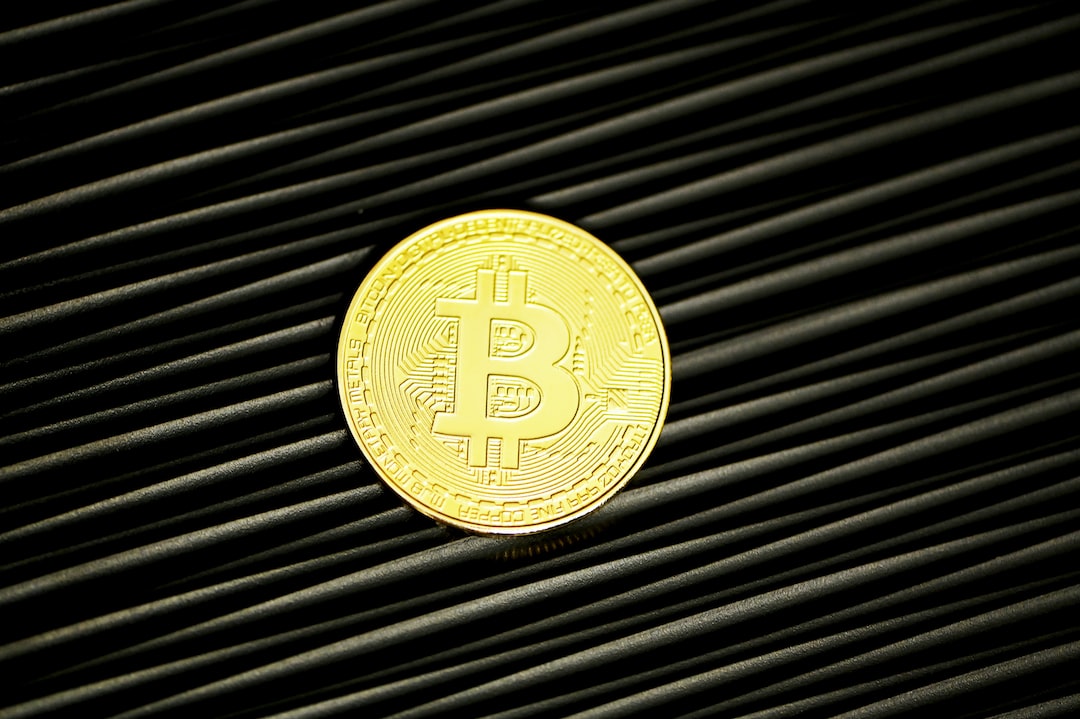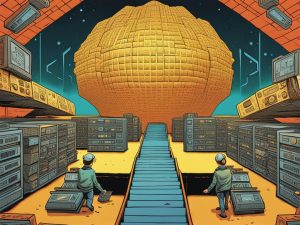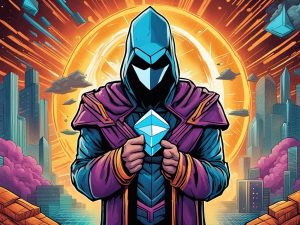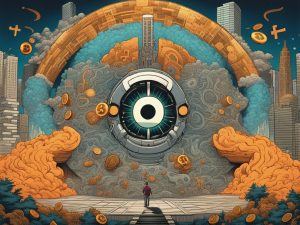How Non-Fungible Tokens (NFTs) are Revolutionizing the Art Market
You may have heard of non-fungible tokens (NFTs) in recent headlines, but you might be wondering what exactly they are and how they are impacting the art market. Well, in this article, we’ll explore the world of NFTs, how they work, and why they have become a game-changer for artists and collectors alike. So, buckle up and get ready to dive into the fascinating world of NFTs!
Let’s start by breaking down what a non-fungible token actually is. Unlike cryptocurrencies such as Bitcoin or Ethereum, which are fungible and can be exchanged on a one-to-one basis, NFTs are unique digital assets that cannot be replicated or replaced. Think of them as digital certificates of authenticity, proving that a specific piece of digital content is original and one-of-a-kind.
So, how does this revolutionize the art market? Well, in the traditional art market, artists often struggle to prove the authenticity and provenance of their work. Counterfeits and forgeries are a pervasive issue. With NFTs, artists have an immutable and transparent proof of ownership and provenance for their digital artwork. This not only eliminates doubts about authenticity but also provides a secure and efficient way to transfer ownership of art in a digital format.
Imagine this scenario: You stumble upon a mesmerizing digital artwork online and instantly fall in love with it. In the past, you might have downloaded a low-resolution copy and shared it on social media without any way to prove its authenticity or support the artist directly. With NFTs, you can now acquire the original piece with proof of ownership and even support the artist directly by purchasing it. You become a part of an exclusive group of collectors, and your ownership is recorded on the blockchain for all to see.
But wait, you might be thinking, “Can’t I simply screenshot or copy the artwork?” Well, technically, yes, you can still save a copy of the artwork, but the value lies in owning the original piece backed by a unique NFT. The NFT serves as a digital “stamp” indicating you own the genuine and original version. It’s a bit like owning a physical painting. Sure, someone can take a picture of it, but they don’t own the actual artwork itself.
The art market isn’t the only sector benefiting from NFTs. Musicians, writers, and even virtual real estate developers are utilizing NFTs to monetize their work and connect with their fans in new ways. Musicians can release limited edition albums as NFTs, providing exclusive content and experiences to their most dedicated fans. Writers can sell unique digital versions of their books, each with its own NFT, making them collector’s items in the digital realm. Virtual real estate developers are creating and selling virtual spaces that can be owned and traded within virtual worlds using NFTs.
Now, you might be wondering about the environmental impact of NFTs, considering their association with blockchain technology. It’s true that blockchain networks consume a significant amount of energy due to the computing power required for mining and verifying transactions. However, it’s important to note that the impact of NFTs on the environment depends on the underlying blockchain network. Some blockchains, like Ethereum, are working towards transitioning from a proof-of-work to a more energy-efficient proof-of-stake consensus mechanism, which could greatly reduce the environmental footprint of NFT transactions.
In conclusion, NFTs have revolutionized the art market by providing artists with a secure and transparent way to prove the authenticity and ownership of digital artwork. And it’s not just limited to art – musicians, writers, and virtual real estate developers are also finding new opportunities with NFTs. The digital world has opened up endless possibilities for artists and collectors, and NFTs are at the forefront of this exciting revolution.
Frequently Asked Questions (FAQs)
Q: Are NFTs only limited to digital artwork?
A: No, NFTs can represent any digital asset, including music, videos, virtual real estate, and more. They serve as a digital proof of ownership and uniqueness.
Q: How can I buy and sell NFTs?
A: NFTs are typically bought and sold on blockchain-based marketplaces. You can use platforms like OpenSea, Rarible, or SuperRare to explore and trade NFTs.
Q: Can I make my own NFT?
A: Absolutely! Many platforms allow creators to mint their own NFTs. However, keep in mind that the value of an NFT lies in its demand and perceived uniqueness among collectors.
Q: Can I display my NFT artwork in a physical space?
A: While NFTs exist in the digital realm, you can display your NFT artwork on screens or projectors. Additionally, physical representations of NFTs, such as QR codes, can be displayed alongside physical artworks to verify their digital authenticity.
Q: Can I sell an NFT I own?
A: Yes, you can sell your NFTs on various marketplaces. Just like physical artwork, the value of an NFT can fluctuate depending on market demand and the reputation of the artist or creator.
Q: Can I transfer ownership of an NFT I own?
A: Yes, NFTs allow for easy transfer of ownership. You can transfer an NFT to another wallet address, providing the new owner with the proof of ownership and authenticity associated with that NFT.
Q: Are NFT transactions secure?
A: NFT transactions are highly secure due to the underlying blockchain technology. The decentralized nature of blockchains makes it extremely difficult for fraudulent activities or unauthorized changes to occur.
Q: How do I store my NFTs?
A: NFTs are stored in digital wallets that interact with blockchain networks. There are various wallet options available, ranging from web-based wallets to hardware wallets for added security.
Q: Can I buy fractional ownership of an NFT?
A: Yes, some platforms allow for fractional ownership of NFTs, enabling investors to buy and trade shares of a high-value NFT. This opens up investment opportunities and makes high-priced NFTs more accessible to a wider audience.
Q: Are NFTs a bubble or a passing trend?
A: The future of NFTs is uncertain, and like any emerging technology, there are debates about its long-term viability. However, for now, NFTs have gained significant traction and have become a major force in the art and digital content market.





 By
By

 By
By
 By
By
 By
By
 By
By